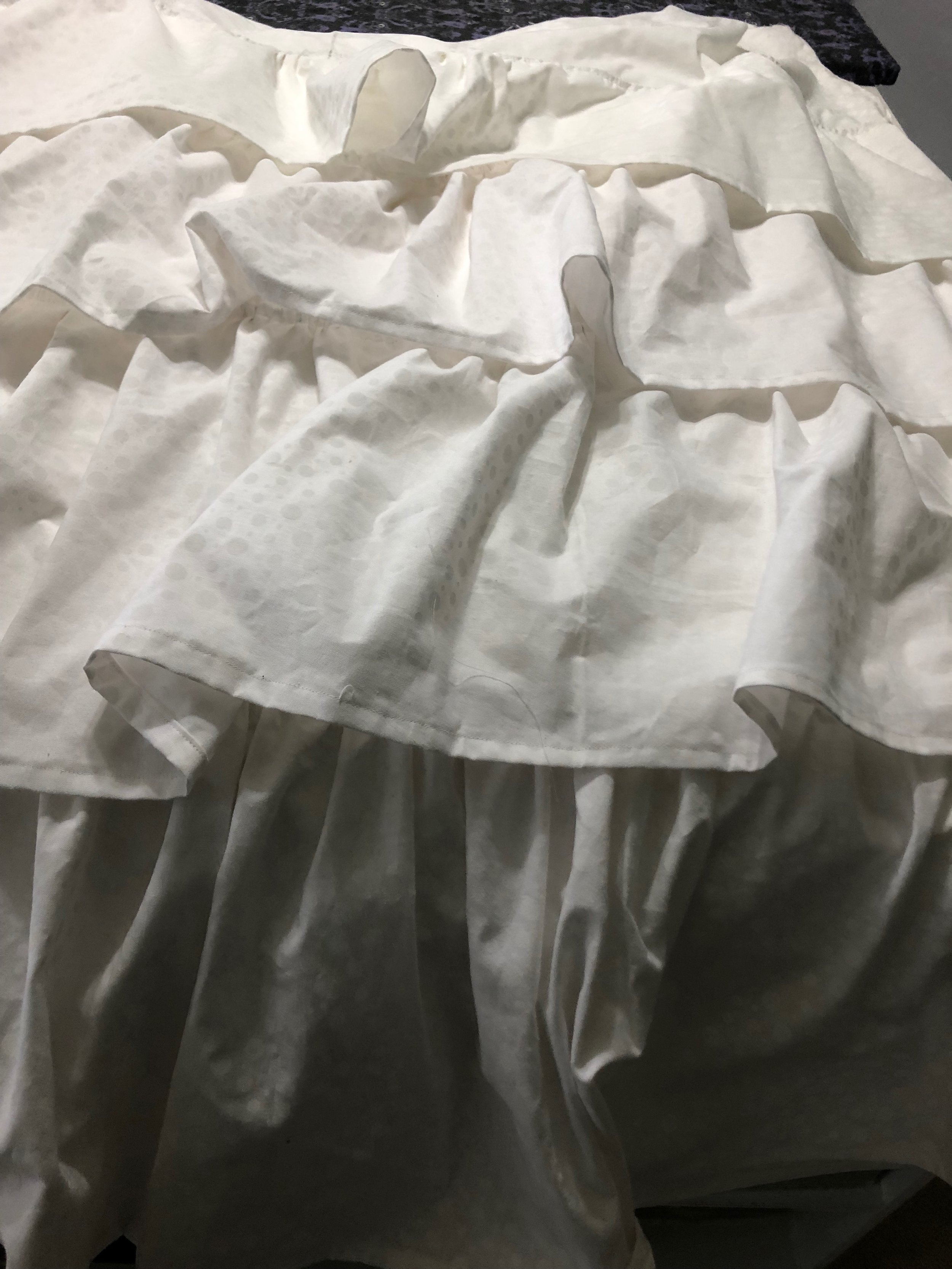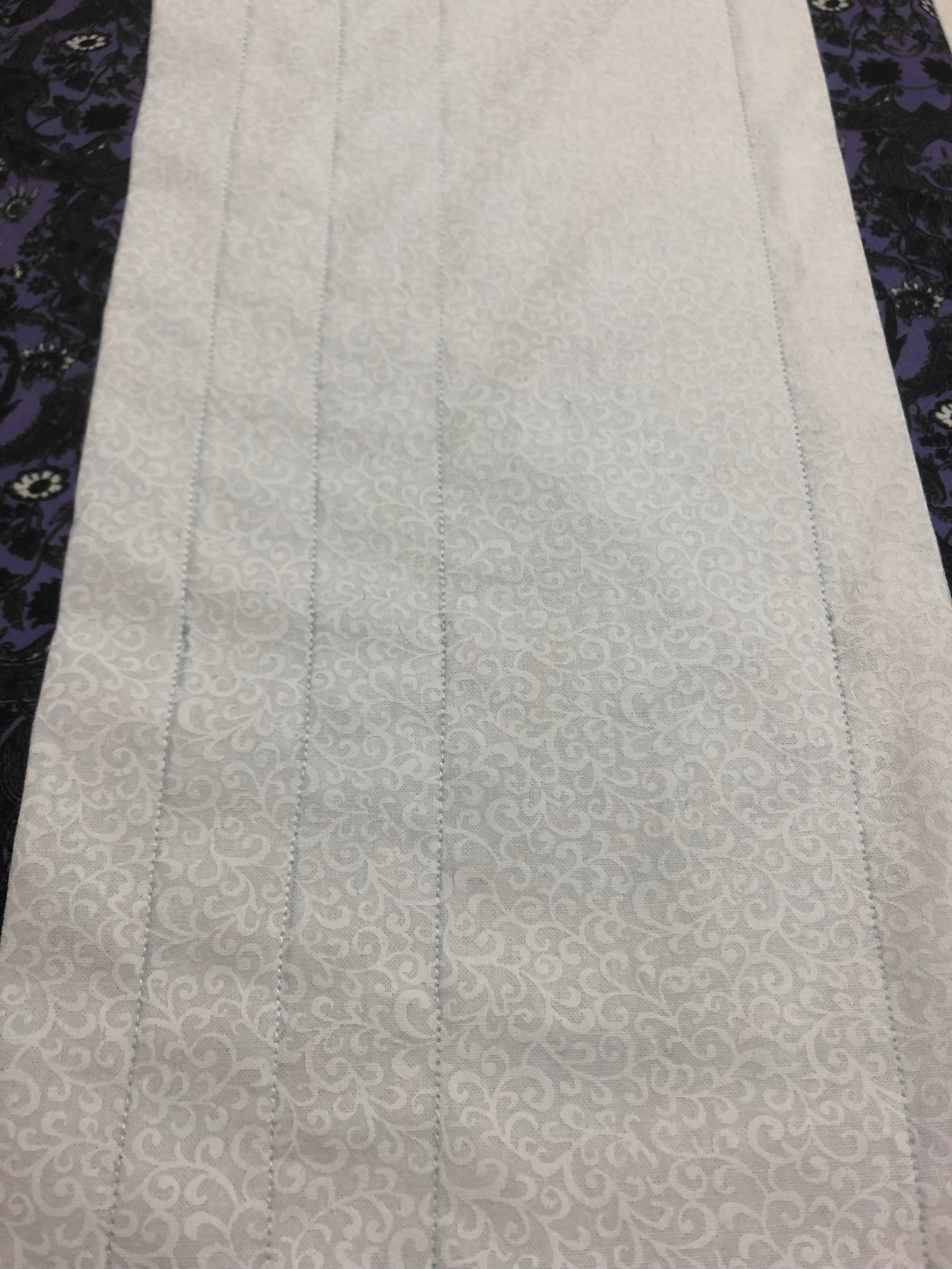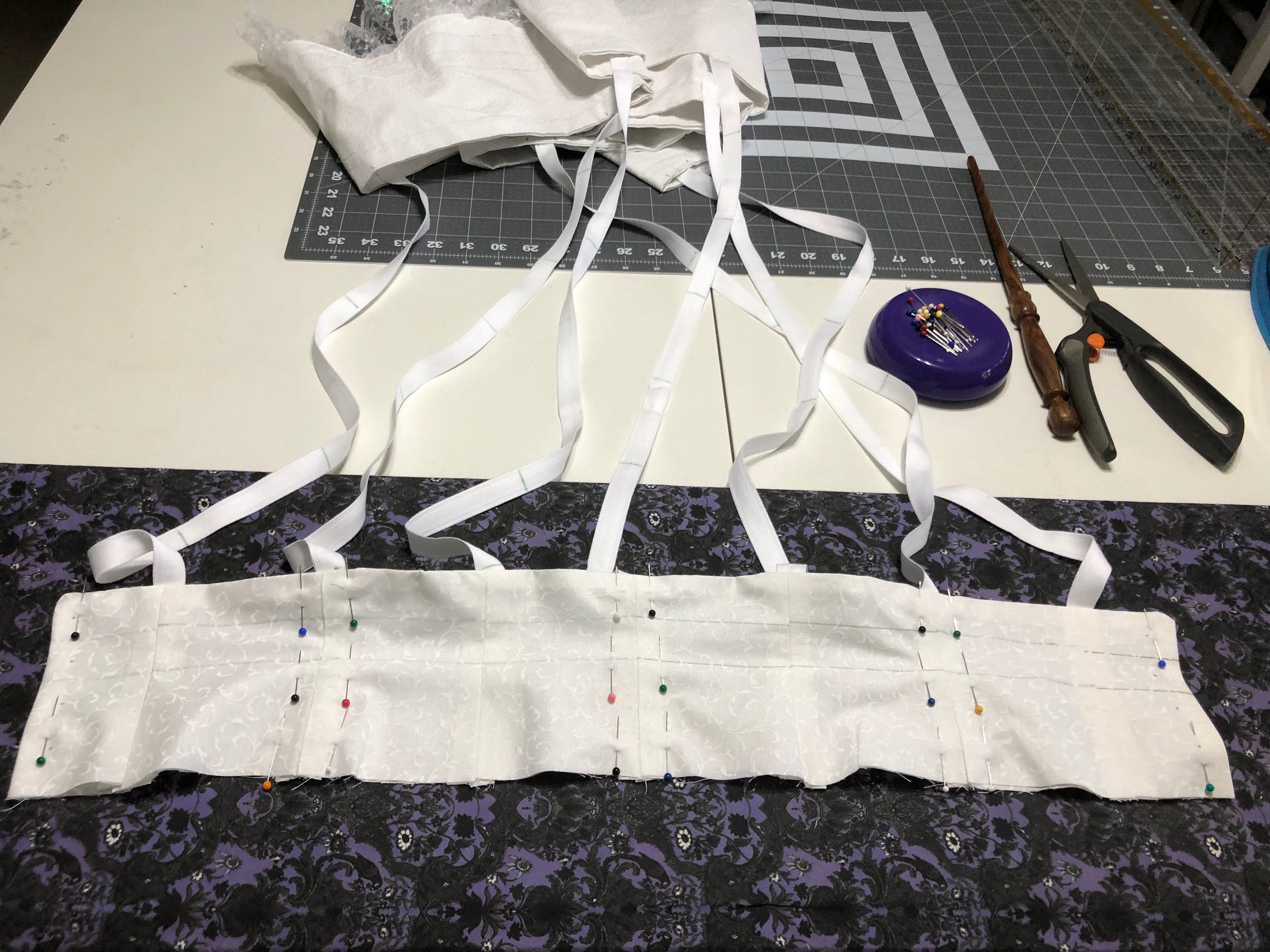“Step 3h: Starting at center back and working towards the front on either side place a mark 1/2” from center, and then each additional mark as shown in the chart. This will mark the placement of where the ribbons will attach to the bag.”
So apparently I took less photo’s than I remembered but after marking the bag and the twill tape placement I actually stitched it down.
“Step 4: Ribbon/tapes”
Instead of going over all the instructions in this section I’m just going to say that I followed the markings and stitched the ribbon on in the manor I thought they went and after reading this section it just confirmed my placement and the steps I took to add these.
So moving onto “Step 5: Make the waist cincher.”
Before getting too much into it, the images given with the pattern were rather confusing and contradicted the instructions so I used the instructions for this part and ignored the drawings that came with it because the didn’t help at all.
“Step 5a: Sew the center backs together along the center back seam, correct sides together, making 2 sets: one for the outside and one for the lining. Clip and press.”
I should also not that I stitched these all on 1/2” seam allowances and that I did not clip any of these and it turned out fine. I did in fact press everything though, because you should. I’ll also note that the fabric I used for the cincher is a different printed white calico than the one I used for the bag but considering they were undergarments I wasn’t too concerned with the fabric not matching.








































